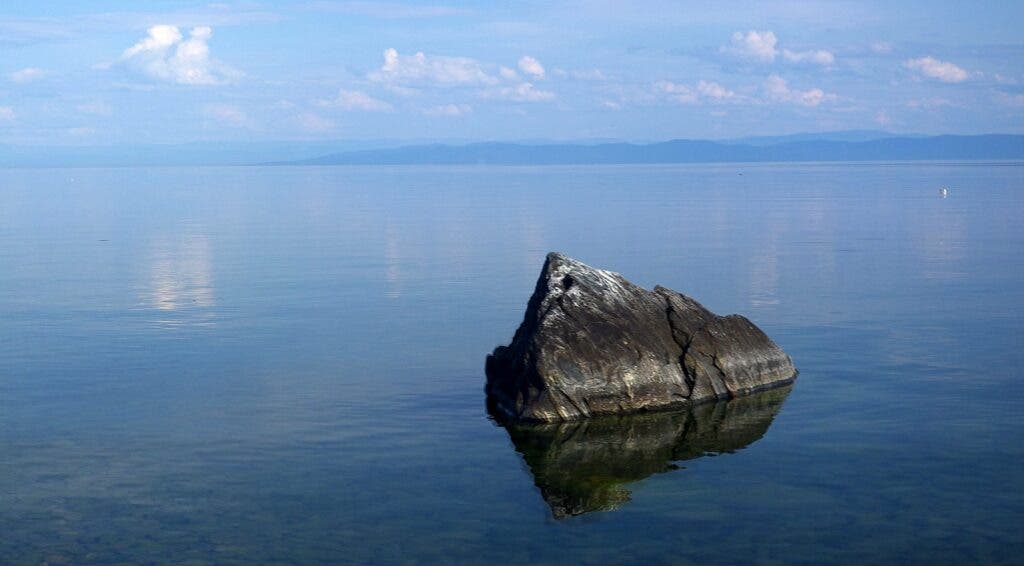
Nestled deep in Russia’s mountain regions of Siberia, Lake Baikal is the world’s deepest and largest freshwater lake by volume, so much so that it hordes 22% of the entire planet’s freshwater supply. Furthermore, it’s also the world’s oldest lake, having formed around 25 million years ago when a giant fissure opened up in the Eurasian continent.
Lake Baikal is often called the ‘Pearl of the World’, in appreciation of its pristine beauty and unique nature. To Russia, it’s what the Grand Canyon represents to the United States — a source of national pride and a magnificent natural resource. But like other major natural reserves, not everything shines bright, with the lake being plagued by pollution and controversial development projects.
How deep is lake Baikal really?
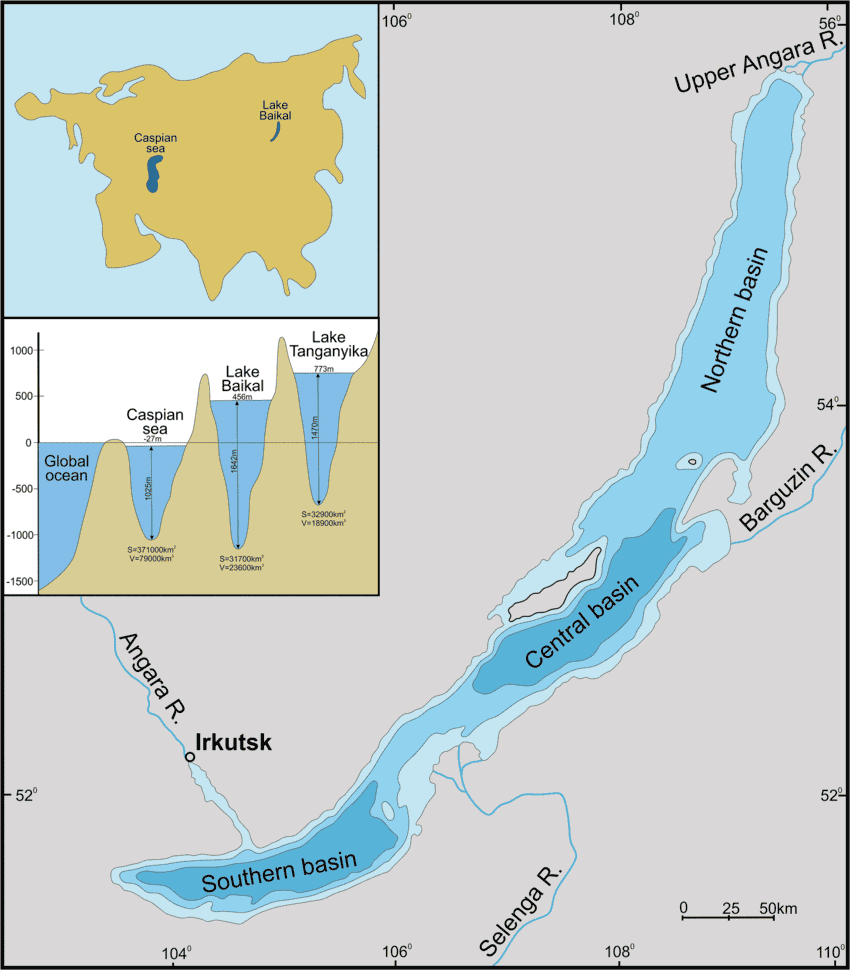
With an estimated depth of 1,642 meters (5,387 feet), Lake Baikal is by far the world’s deepest lake, followed by Lake Tanganyika in Africa (1426 meters or 4,610 feet) and the Caspian Sea (1,025 meters or 3,360 feet) in the Caucasus, which is technically the world’s largest salt lake.
Russian scientists and explorers have been dazzled by the sheer scale of Baikal for centuries. The first documented attempt to measure the lake’s depth was performed in 1797 by workers of the Kolyvano-Voskresensky factories in the Altai, Smetanin, and Kopylov, recording a depth of 1238 meters (about 4,000 feet).
From 1876 till 1902, a massive hydrographic expedition was undertaken under the direction of F.K.Drizhenko to thoroughly survey Baikal. Measurements of the depths were taken mainly near the shores and only rarely over the whole lake. This survey recorded the greatest depths in Central Baikal, between 1,450 and 1,552 meters (4,757 and 5,091 feet). A subsequent expedition in the 1930s arrived at a maximum depth of 1,741 meters (5,711 feet) near Olkhon, off Cape Ukhan.
A number of other bathymetric surveys have been undertaken since then, all of which used either ropes or lines to make their measurements. But, starting in the 1950s, Soviet scientists surveyed Lake Baikal using echometers that measure the time it takes for sound waves to pass through the water and reflect back to a receiver, which offers a much more accurate reading at 1,620 meters.
Finally, a 1992 bathymetric map that covers the entire surface of Baikal was compiled by the USSR Ministry of Defence, whose echo readings found a maximum depth of 1,642 meters (5,387 feet), a figure that is still accepted to this day.
The greatest depth is recorded in the central part of the lake, off the island of Olkhon, equidistant from its south and north ends. According to an empirical rule set down by the famous American naturalist and writer Henry Thoreau, a lake’s greatest depth typically lies at the intersection of its length and its greatest width, which is precisely the case for Baikal as well.
The science that makes Lake Baikal so special
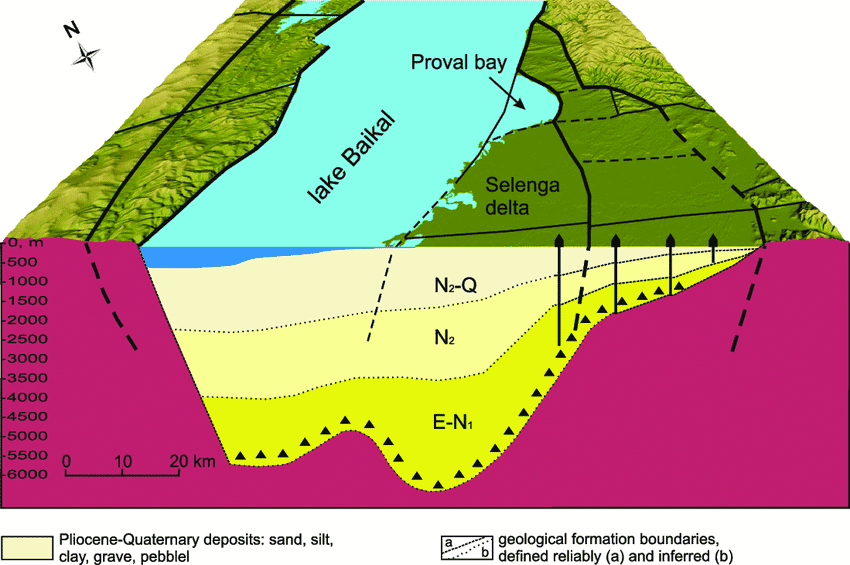
The vast majority of relatively large lakes in the world are only a few thousand years old. They formed following the last ice age out of massive amounts of frozen water and the drainage patterns of rivers. These lakes don’t last very long before they’re filled over time with sediment and are typically no deeper than a couple of hundred meters.
Only around 20 lakes in the world are truly ancient, meaning they’re more than a million years old. Lake Baikal is one of them and is by far the oldest, with an estimated age of 25-30 million. Other ancient lakes include Lake Issyk-Kul in the Northern Tian Shan mountains in Eastern Kyrgyzstan and Lake Maracaibo in northwestern Venezuela, both of which are salt lakes.
Ancestral lakes are not at the whims of ice ages or meandering rivers. They’re forged in active rift zones where tectonic plates move away from one another, which over time creates deep valleys and pits. This is how Lake Baikal formed, though a few ancient lakes formed following meteor impacts or inside dormant volcanoes.
Since the regions on either side of Baikal are at high altitudes exceeding 2,000 meters (nearly 7,000 feet), the divergent tectonic plate boundary formed a very deep basin. This explains why Baikal holds such a stupendous amount of water — over 23,000 cubic kilometers (5,600 cubic miles) — despite the fact that surface wise it is not all that impressive.
Baikal has barely half the surface area of Lake Michigan and ranks only 7th among the world’s largest lakes by surface area. But its depth more than makes up for whatever it’s lacking in width, containing more water than all of North America’s great lakes combined.
Lake Baikal’s unique geology and fauna
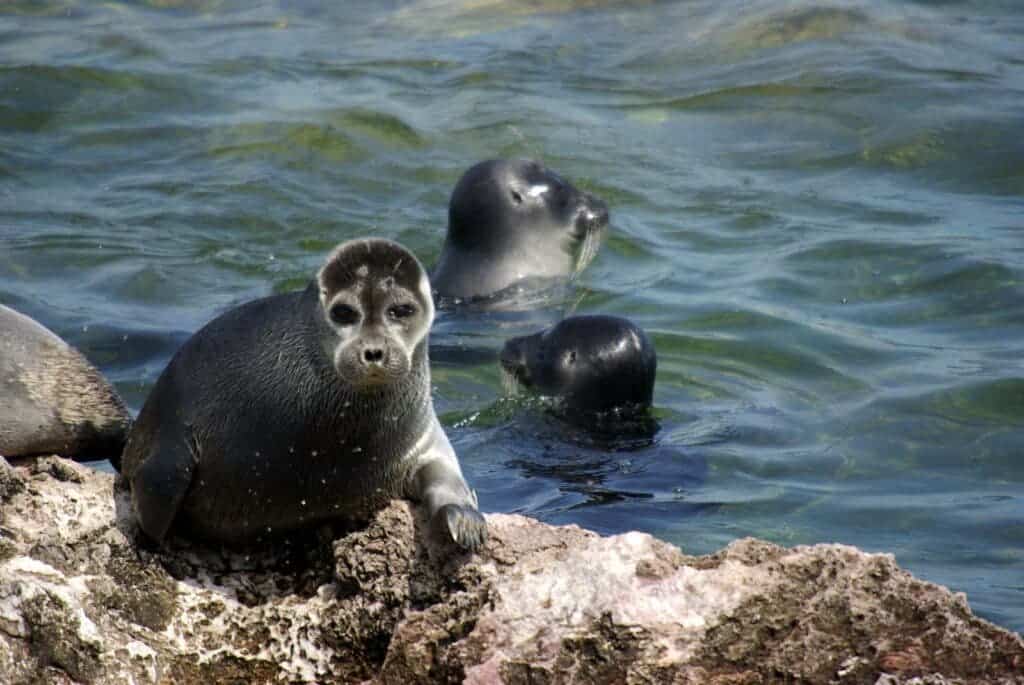
The geological wonder that is Lake Baikal doesn’t end there. The rift valley that birthed the lake is actually much deeper. According to a 1990 study, the rift valley extends an additional 7,000 meters below the bottom of the lake, and is now covered by sediment deposited over millions of years. In total, the geological rift that created Lake Baikal may be as deep as 9 kilometers (5.6 miles), which would make it the deepest continental rift on the planet.
Being so old and undisturbed by glacial periods, Baikal is simply a goldmine for science. Deep-drilled core sediments can reveal how the climate has changed over millions of years in the past in exceptional detail. The shallowest sediment layers of this lake may contain the only known freshwater occurrence of natural gas hydrates.
Despite the lake’s fantastically great depth, its water is highly oxygenated, meaning creatures thrive at all depths in the lake. It’s so fresh that calcium carbonate does not survive in the fossil record, contributing to a unique biological habitat. In fact, Lake Baikal is home to more species of plants and animals than any other lake in the world — more than 3,600 — many of which cannot be found anywhere else. A notable example is the Baikal seal (Pusa sibirica), also known as the nerpa, the only freshwater seal in the world. On the shores of the lake, brown bears and wolves can be found, as well as deer, birds, and all manner of rodents and smaller predators.
Lake Baikal monsters?
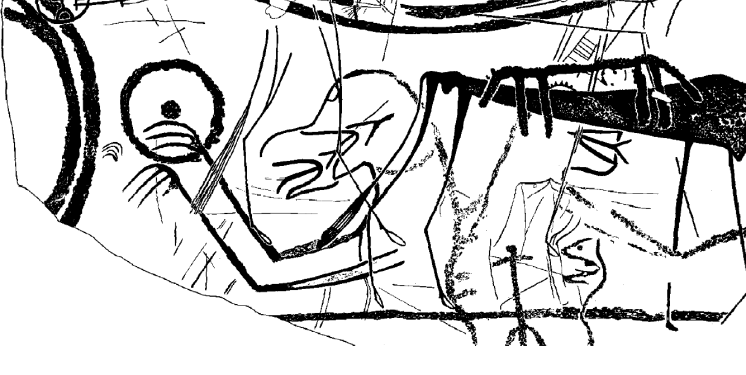
Lake Baikal’s stunning biodiversity has earned it the nickname of the “Galapagos of Russia”, but like most natural hotspots that attract a lot of attention, Baikal is no stranger to myths and legends. Baikal even has its own version of the Loch Ness Monster, known to native Buryat people as “Lusud-Khan“, “Water Dragon Master”, which is supposed to be “giant sturgeon with a prominent snout and armored plating along the back.” Early Chinese explorers of the lake, which they called the North Sea, also reported seeing these beasts, known to them as “gods of the lake” and “dragon fishes.”
This alleged monster is represented in ancient petroglyphs etched along the Baikal cliffs. A large stone slab erected as a monument on the bank of the Yenisei river is estimated to date between the 3rd and 9th century BC and depicts some mysterious water monster.
As with Nessy, local reports abound of mysterious sightings such as huge outlines floating on the waters or even beneath the crystal-clear water. To make Baikal even more mysterious, the lake is often the center stage of numerous accounts of UFO and alien sightings.
Lake Baikal and climate change
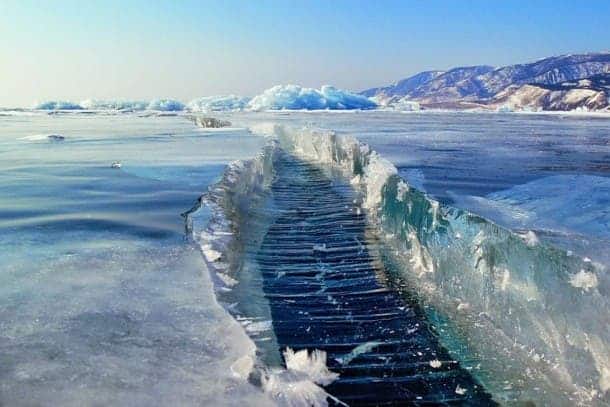
Like many previously pristine natural resources, Lake Baikal is in trouble because of human activity and climate change. Since the 1940s, the surface water of the lake has warmed by 2.1° F (1.2° C), the annual ice-free season has lengthened, and the thickness of the winter ice has decreased substantially. Algal blooms have increased by 300% and since 1892, winter temperatures in the region around Lake Baikal have warmed by 0.5° F (0.3° C) per decade, making this one of the most rapidly warming regions in the world.
Given the current greenhouse gas emission trend, Lake Baikal could warm by an additional 7.2° to 9° F (4° to 5° C) by the end of the century, which would further alter the ice cover season and dramatically disrupt the lake’s unique ecosystem.
Since 1996, Lake Baikal has been designated a World Heritage Site. However, despite its status that is supposed to offer it protection, Baikal’s coastline has been disturbed and even polluted by development projects such as new resorts to accommodate an ever-growing number of tourists and a paper mill that has been known to discharge pollutants into the lake’s once pristine waters. The mill was closed down in 2008 but reopened two years later, supposedly using cleaner processing methods.
Previously, Baikal dodged some bullets that threatened to seriously impact its ecosystems, including plans to build a uranium plant in the nearby city of Angarsk and an oil pipeline that was supposed to skirt the edge of the lake’s coastline. Both projects thankfully never went as planned thanks to the resistance of conservationists and local communities.
A lake of many superlatives, Lake Baikal deserves to be cherished and honored but also protected. As one of the crown jewels of planet Earth, we owe it at least that much.


